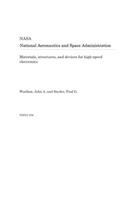
Materials, Structures, and Devices for High-Speed Electronics
Series:
Advances in materials, devices, and instrumentation made under this grant began with ex-situ null ellipsometric measurements of simple dielectric films on bulk substrates. Today highly automated and rapid spectroscopic ellipsometers are used for ex-situ characterization of very complex multilayer epitaxial structures. Even more impressive is the in-situ capability, not only for characterization bu
NaN
VOLUME
English
Paperback

Advances in materials, devices, and instrumentation made under this grant began with ex-situ null ellipsometric measurements of simple dielectric films on bulk substrates. Today highly automated and rapid spectroscopic ellipsometers are used for ex-situ characterization of very complex multilayer epitaxial structures. Even more impressive is the in-situ capability, not only for characterization but also for the actual control of the growth and etching of epitaxial layers. Spectroscopic ellipsometry has expanded from the research lab to become an integral part of the production of materials and structures for state of the art high speed devices. Along the way, it has contributed much to our understanding of the growth characteristics and material properties. The following areas of research are summarized: Si3N4 on GaAs, null ellipsometry; diamondlike carbon films; variable angle spectroscopic ellipsometry (VASE) development; GaAs-AlGaAs heterostructures; Ta-Cu diffusion barrier films on GaAs; GaAs-AlGaAs superlattices and multiple quantum wells; superconductivity; in situ elevated temperature measurements of III-V's; optical constants of thermodynamically stable InGaAs; doping dependence of optical constants of GaAs; in situ ellipsometric studies of III-V epitaxial growth; photothermal spectroscopy; microellipsometry; and Si passivation and Si/SiGe strained-layer superlattices. Woollam, John A. and Snyder, Paul G. Unspecified Center NAG3-154...
Price Comparison [India]
In This Series
Bestseller Manga
Trending NEWS




















